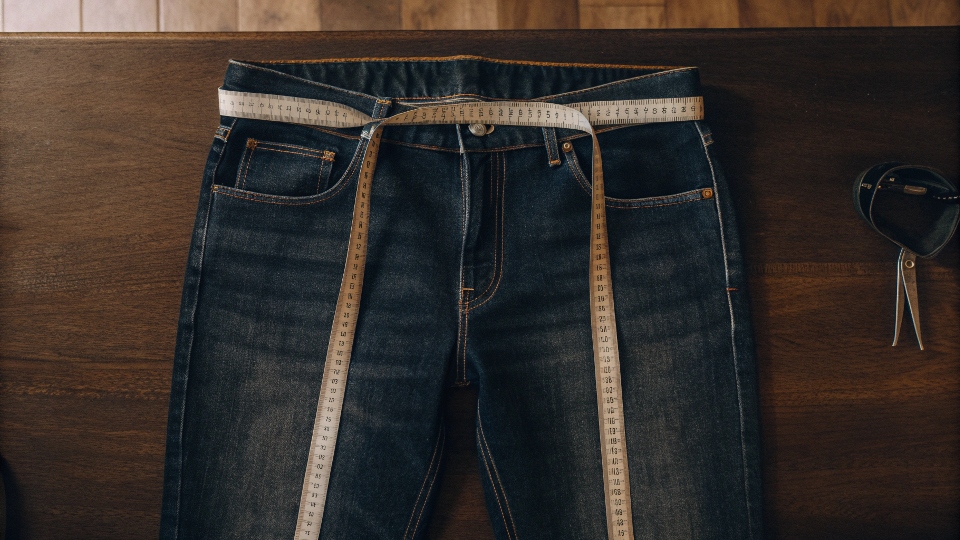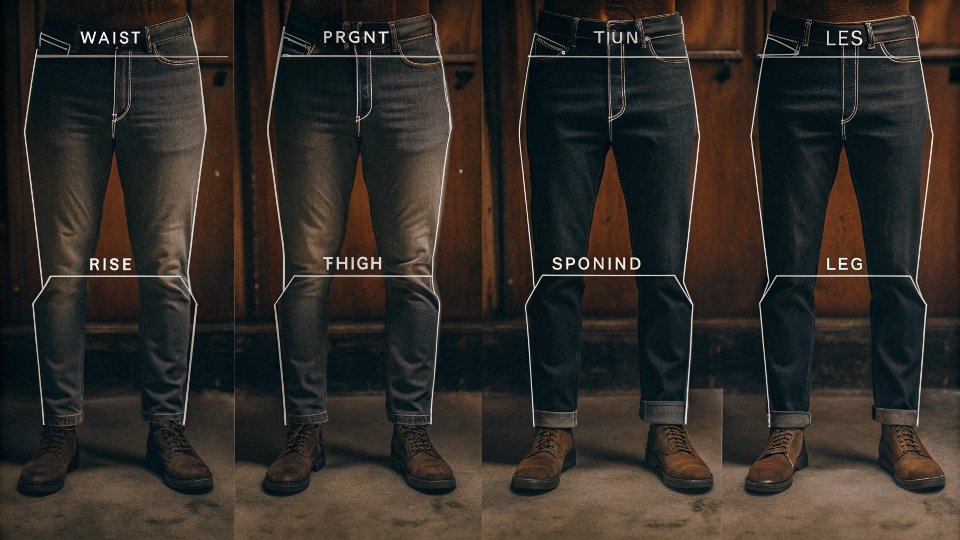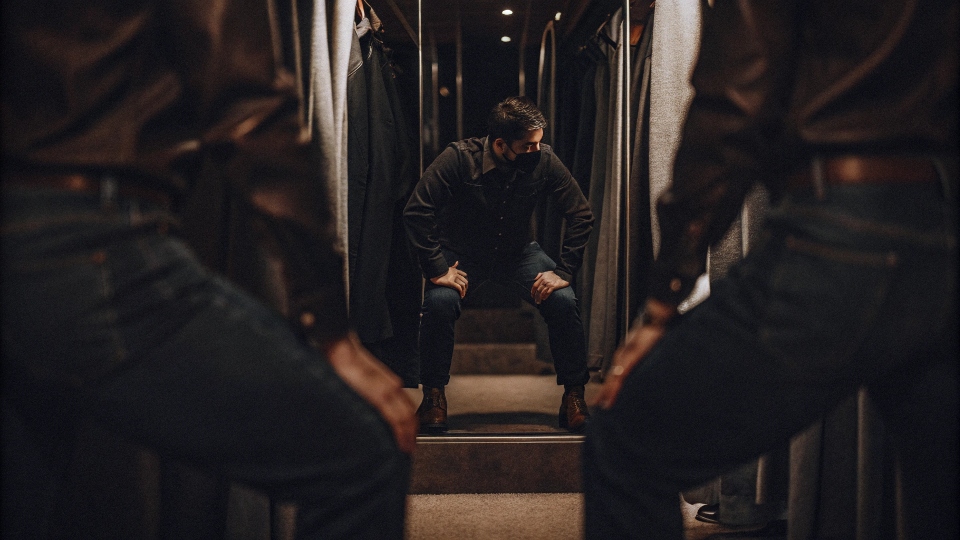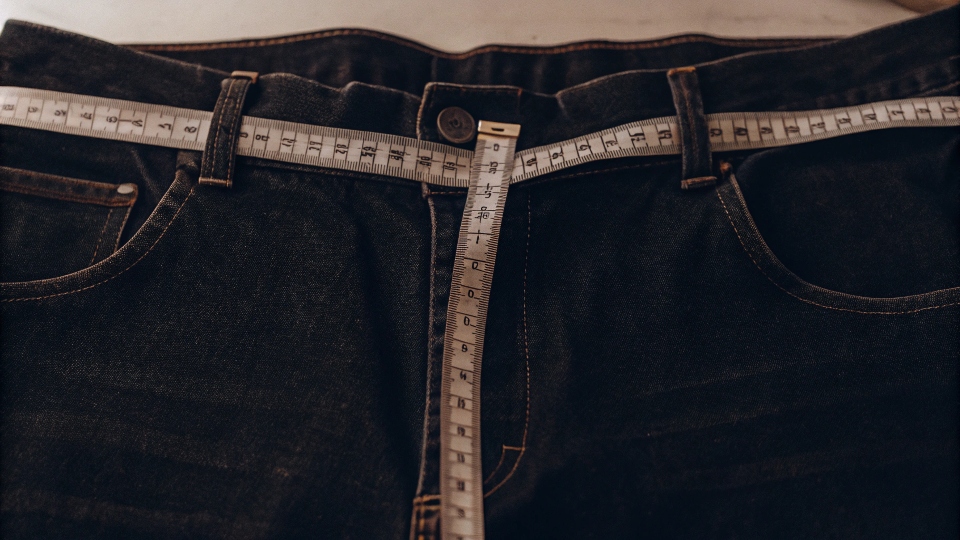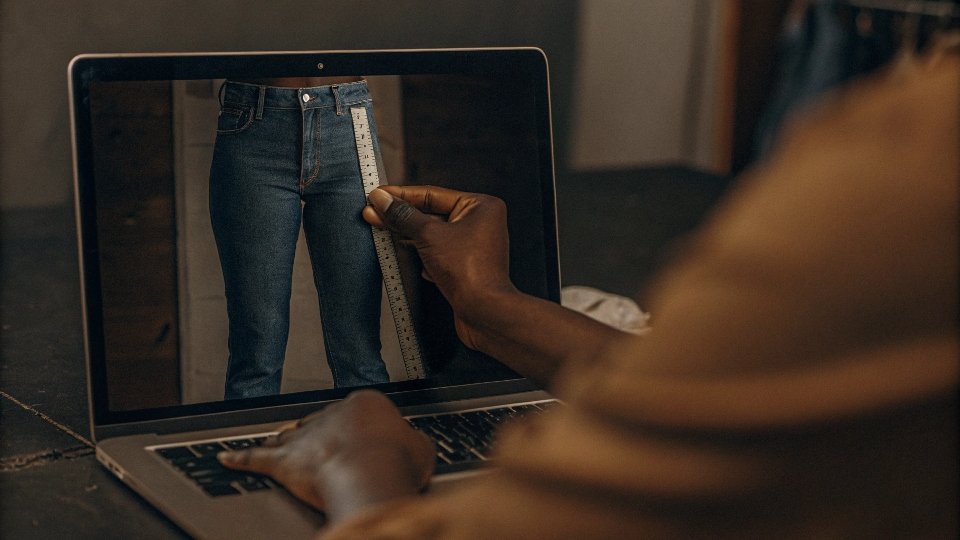You buy a pair of jeans online, confident you ordered the right size. They arrive, you try them on, and they are too tight in the thighs or too loose at the waist.
The single best tool to compare the fit of men's jeans is a simple measuring tape1. Use it to measure a pair of jeans you already own that fits you perfectly. This gives you a personal blueprint to compare against any brand's online size chart.
In my 20 years of making jeans, I've learned that sizes like "32" or "Medium" are almost meaningless. Every day, I work with technical specification sheets, or "tech packs2," from designers. These documents don't just say "size 32." They list dozens of precise measurements in inches or centimeters for every part of the jean. This is the professional way to define and guarantee a perfect fit. You can use this same method at home to end the guesswork of shopping for jeans3 forever.
How to find the best fitting jeans for men?
Finding the perfect fit feels impossible. A pair that fits your waist is often too tight on your thighs, or a pair that fits your thighs is baggy everywhere else. You need a better way.
To find the best-fitting jeans, you must look beyond the waist and inseam. Measure five key points on your favorite pair: the waist, front rise, thigh, inseam4, and leg opening. These five numbers define the entire fit.
When a designer like Dean sends me a tech pack, these five measurements form the core of the design. They are the difference between an average fit and a perfect one. Forgetting even one of them is why so many jeans fail to fit properly. Here is what each one tells you:
- Waist: This determines comfort at your midsection.
- Front Rise: This is the most crucial, yet most ignored, measurement. It dictates where the jeans sit on your hips and how much room you have in the crotch. A low rise sits on the hips, while a high rise sits closer to the natural waist.
- Thigh: This is essential, especially for men with more athletic legs. A thigh that is too tight is uncomfortable and restricts movement.
- Inseam: This is the standard leg length measurement.
- Leg Opening: This defines the final shape of the jean, whether it's skinny, straight, or bootcut.
By measuring these five points on a pair you love, you create a "fit profile5" that is more accurate than any size label.
| Measurement | Why It's Important | How It Affects Fit |
|---|---|---|
| Waist | The foundation of comfort and fit. | Prevents the need for a belt or feeling too constricted. |
| Front Rise | Determines where the jeans sit on your body. | Affects comfort in the crotch and overall style. |
| Thigh | Critical for movement and comfort for all builds. | A good thigh measurement prevents tightness or bagginess. |
| Inseam | Defines the length of the leg. | Ensures the jeans break correctly over your shoes. |
| Leg Opening | Dictates the silhouette and style of the jean. | Determines how the jeans fit around your ankle and shoes. |
How to tell if your jeans fit correctly for men?
You are in the dressing room with a new pair of jeans on, but you're not sure. You are worried that what feels okay now will become uncomfortable or look sloppy after a few hours of wear.
Your jeans fit correctly if the waistband stays in place without a belt and feels snug but not tight. You should also be able to pinch about a half-inch to an inch of fabric on your thigh.
After decades of seeing finished products on models and clients, I can tell you a few simple tests that work every time. A perfect fit is a balance between structure and comfort. Before you commit to a new pair of jeans, you should always perform these three simple checks in the fitting room.
First, test the waist. You should be able to slide two fingers between your body and the waistband at your back. If you can fit your whole hand, they are too big and will sag. If you can't fit one finger, they are too tight and will be uncomfortable when you sit.
Second, perform the squat test. Sit down or bend into a deep squat. Pay attention to how the jeans feel. They should not pull down hard at the back, exposing more than you want.
They also shouldn't feel painfully tight in the crotch or across your thighs. A good pair of jeans, especially with stretch, should move with you.
Finally, check the thigh. Stand up straight and pinch the fabric on the front of your thigh. For a slim fit, you should be able to grab about a half-inch of loose material.
For a straight or relaxed fit, you should be able to grab about an inch or more. If you can't pinch any fabric, they are too tight and will likely be uncomfortable.
How to figure out your size in men's jeans?
You think you are a size 34, but in some brands, a 32 fits perfectly while in others, you need a 36. This "vanity sizing" makes shopping online feel like a complete lottery.
Ignore the size on the tag. To find your true size, take your best-fitting pair of jeans, lay them flat, and measure the waistband from one end to the other. Double that number. That is your true jean waist measurement6.
I see this "vanity sizing" firsthand in the tech packs I receive. A brand might ask me to manufacture a jean with an actual waistband measurement of 35 inches but then request we put a "Size 32" label on it.
This is a common marketing tactic to make customers feel slimmer. It's why the number on the tag is the least reliable piece of information on a pair of jeans.
The most accurate method is to measure a pair of jeans that you already know fits you well. Here is the step-by-step process we use for quality control in the factory:
- Take your best-fitting jeans. Don't use a new, stiff pair or an old, stretched-out pair.
- Button and zip them up completely.
- Lay them on a flat surface like a table or the floor.
- Smooth them out and pull the front of the waistband so it is perfectly aligned with the back of the waistband. It should be a straight line.
- Take your measuring tape and measure straight across the top of the waistband, from one side to the other.
- Double that measurement. For example, if you measure 17 inches across, your true jean size is 34. This is the number you should use to compare with online size charts.
How do I find jeans that fit me right?
You have your measurements, but you're still looking at a brand's size chart and feeling overwhelmed. You need a simple strategy to turn those numbers into a perfectly fitting pair of jeans delivered to your door.
To find jeans that fit you right, create a "fit profile" with the five key measurements from your favorite pair. Use this profile to compare directly against the detailed Garment Measurement charts that most brands provide online.
You have done the hard work. Now it is time to use that information to shop like a pro. Think of yourself as a designer and the size chart as your technical blueprint. Here is how you can use the information you have gathered to find the perfect fit every time.
First, establish your blueprint. Write down the five key measurements from your best-fitting jeans: waist, front rise, thigh, inseam, and leg opening. This is your personal fit profile.
Second, when you shop online, go straight past the simple size options like "32x32". Look for a link that says "Size Guide," "Size Chart," or "Garment Measurements." You want the chart that gives you the specific measurements for the garment itself, not just general body measurements.
Third, compare your blueprint to the chart. Don't just look at the waist. Check how your front rise, thigh, and leg opening numbers match up.
A size that matches your waist might have a much smaller thigh measurement. Look for the size that gets the closest to your ideal numbers across all categories.
This is how my quality control team ensures every pair of jeans we ship matches the designer's vision, and it's how you can ensure your purchase matches yours.
Conclusion
The best tool for finding jeans is not an app or a website. It is a measuring tape and the knowledge of your own perfect fit, which allows you to shop with precision and confidence.
-
Learn how to effectively use a measuring tape to ensure your jeans fit perfectly, avoiding common sizing mistakes. ↩
-
Discover how tech packs are essential in the fashion industry for ensuring accurate sizing and fit. ↩
-
Discover effective strategies for shopping online that will help you find jeans that fit perfectly. ↩
-
Find out what inseam measurement is and how it impacts the overall fit of your jeans. ↩
-
Discover how creating a fit profile can help you find jeans that fit perfectly every time. ↩
-
Get detailed instructions on measuring your waist correctly to find the perfect fitting jeans. ↩

